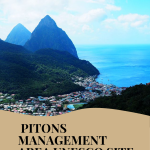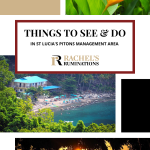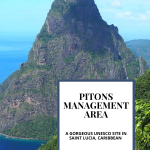Pitons Management Area UNESCO site: So much to see!
Two pointed peaks jut steeply up from the sea, covered with green tropical vegetation: a stunning sight. These volcanic spires called the Pitons are the most instantly-recognizable feature of the Caribbean island of Saint Lucia. They’re also the centerpiece of St Lucia’s only UNESCO World Heritage site: Pitons Management Area.
The spires are reminders of a volcano that collapsed many thousands of years ago. The town of Soufrière sits inside the caldera of the volcano, but just outside the limits of Pitons Management Area.
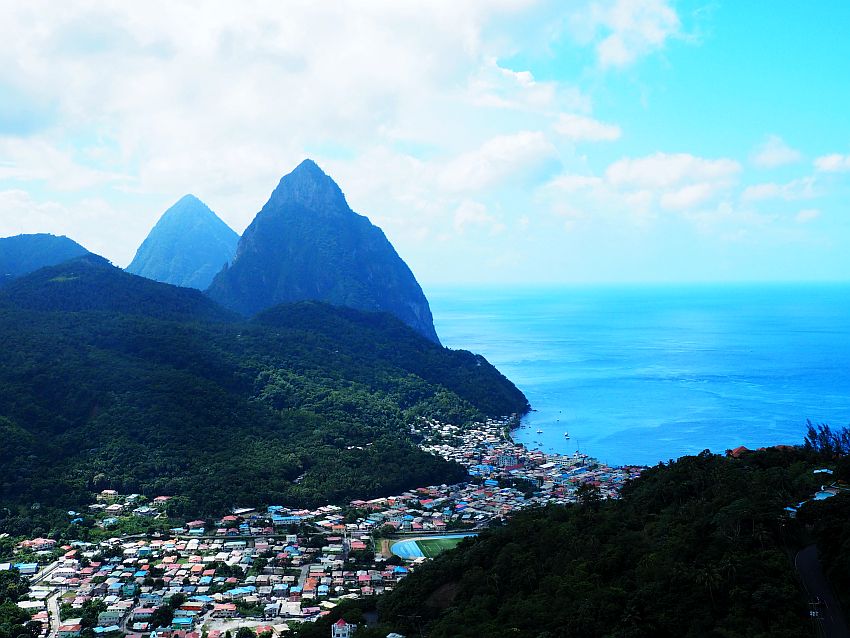
Disclosure: This article contains affiliate links. If you click on one and make a purchase, I will receive a small commission. This will not affect your price.
Pitons Management Area holds other attractions as well, including a “drive-in volcano,” famous sulphur springs, several waterfalls, a botanical garden, hiking trails and protected reefs. Zoom in to the southwestern part of the island on the map below and you’ll see I’ve drawn a rudimentary outline of the area included in the UNESCO designation.
How to see the Pitons
The taller of the Pitons is the southern one, called Gros Piton (770 meters), and the other is called Petit Piton, at 743 meters. Here are five different ways to explore the Pitons:
1. From the water
Many of the hotels and resorts on St Lucia offer boat trips of various sorts to see the Pitons from the water. We, (my friend Shobha of Just Go Places and I) joined a sailboat tour arranged by the resort we stayed in called East Winds (Read my review of East Winds here). Taking a boat is a beautiful and relaxing way to take in the view, and the best time to do it is at sunset. Then you not only get to watch the sunset over the sea, but also you get the “golden hour,” perfect for photographing the Pitons. Unfortunately, on our trip, which left from Rodney Bay up north, we didn’t sail close enough to get any pictures, but if you take a boat from Soufrière or one of the nearby resorts, you should be able to get a great angle.
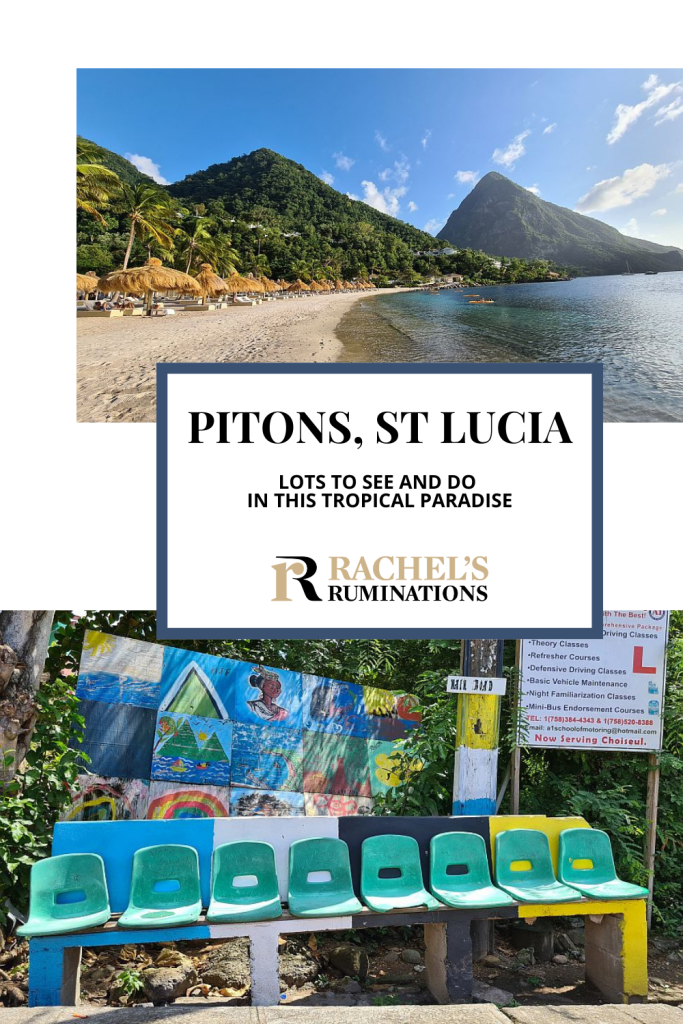
2. From a resort
If you’re staying in one of the resorts nestled between the two peaks or up on a hill overlooking the peaks, you’ll get a lovely view. Some of these resorts are very elegant, exclusive, and expensive, particularly top-of-the-line Ladera Resort, with its open-air suites and private plunge pools and a view of both peaks.
A side note about beaches
All beaches in St Lucia are open to the public. You can go, for example, to Sugar Beach, a gorgeous bay right between the two peaks. Sugar Beach Resort extends up a hill above the beautiful white-sand beach.
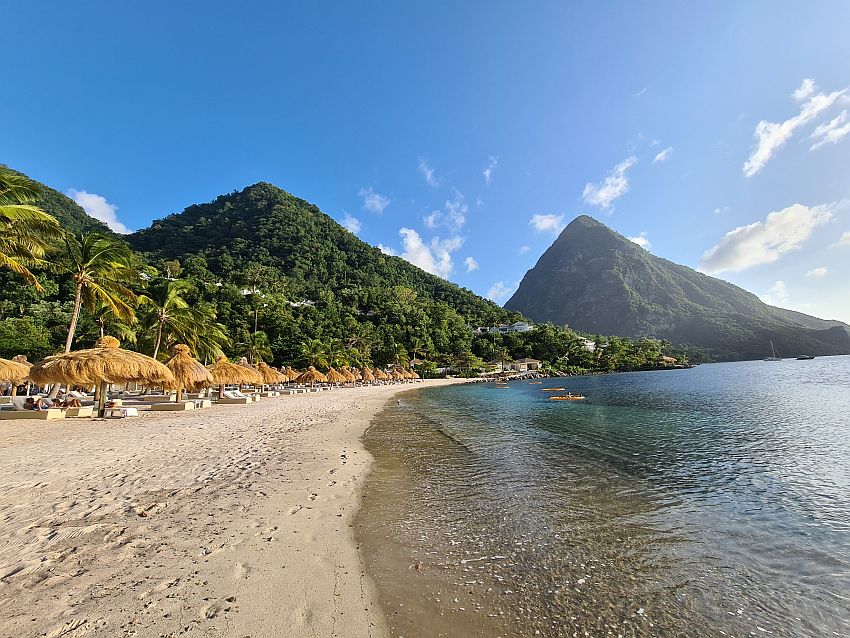
However, you won’t be welcomed with open arms at some of these resorts if you’re not a resident. Some will expect you to pay for a lounge chair and umbrella – and they’re generally quite pricey. They might limit you to parking a long way uphill from the beach (This happened at Sugar Beach when we visited, and it was a long way from the beach. Yet a friend visited the next day and was allowed to drive down to park much closer to the beach. Your mileage may vary.) They might stop you from using their bathrooms to change your clothes (This happened to me at Jade Mountain Resort at Chastanet Beach.).
If you’re going to use a beach that’s within a resort in St Lucia, I’d suggest you go ahead and pay for the lounge chairs to get better treatment. Spend the whole day to make it worth the money. Better yet, go to the more egalitarian public beaches and rent a chair from a local person there. Ask at your hotel about local beaches. There are lots of them.
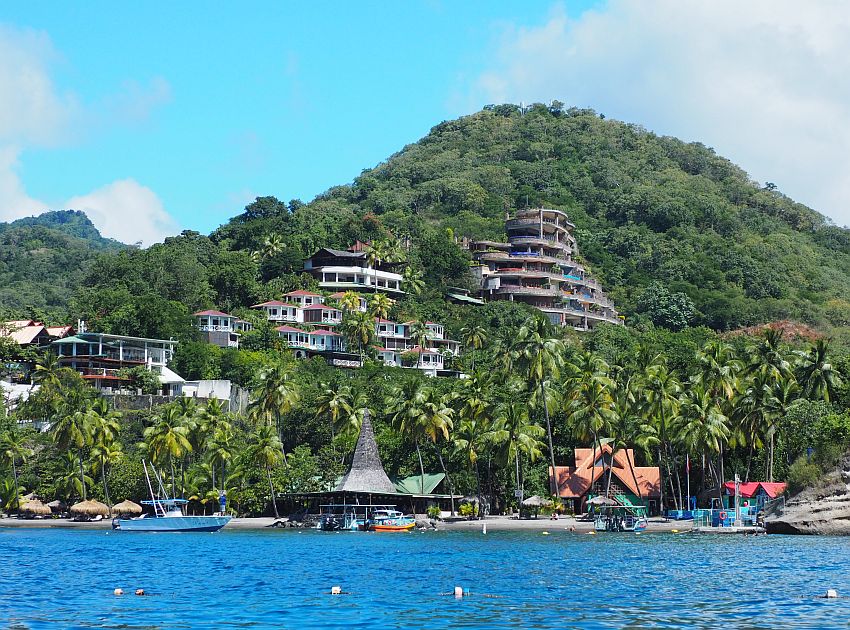
3. From a viewpoint on the Tet Paul Nature Trail
At the Tet Paul Nature Trail, a guide is included in the entrance fee (but don’t forget to tip your guide as well). The walk is a well-marked combination of dirt path and stairs winding up through the tropical forest for about a kilometer. Our guide was very patient with our slow tempo – I needed to stop often to catch my breath, and I wanted to stop often to take pictures. She was full of interesting information about the vegetation we passed and about Saint Lucia in general.
At the topmost point of the trail is a large viewpoint allowing a 360-degree view of the island. Of course, the main sights are the two Pitons, and they are indeed magnificent from that angle. Covered in green, against the deep blue of the sea and the bright blue of the sky – it was breathtaking!
Bring water, sunscreen and good walking shoes.
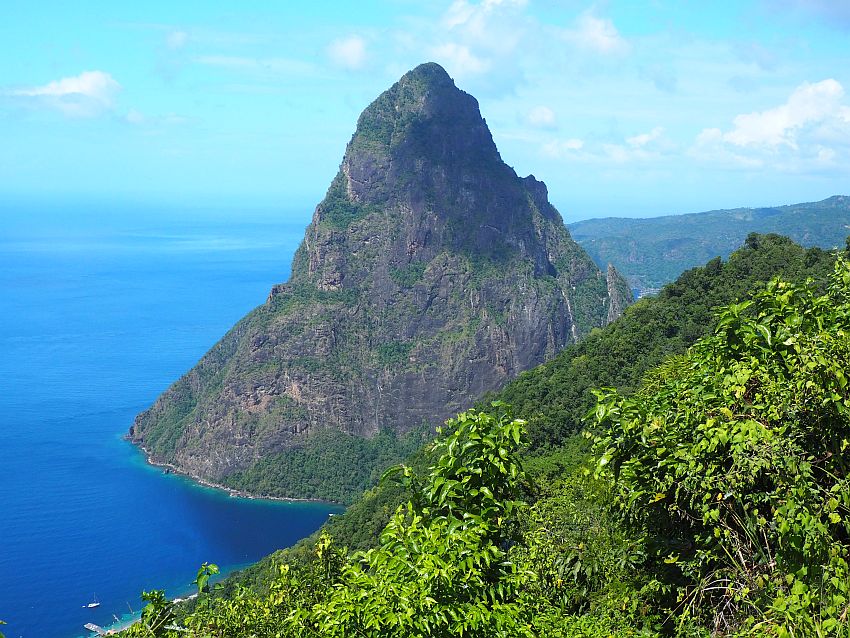
As an aside, we discovered as we left Tet Paul that there are actually two Tet Paul trails. If you don’t turn at the sign opposite the green house, but rather go straight, you’ll reach a parking area for a “Tet Paul Nature Hike.” (We went that way by mistake after our walk – I have no sense of direction!) There, we stopped to ask a young man for directions. He claimed that this was the original Tet Paul trail and that the one we had taken was diverting the tourists away from him. I can’t make any statement about which was first or which is better, or whether they both lead to the same viewpoint. I can only say that we got a wonderful view from the “Tet Paul Nature Trail.”
4. Hiking the Pitons
There was absolutely no way for us to even consider hiking up either of the Pitons. What I was told was that the hike up Gros Piton, though it’s longer, is actually the easier of the two, but still very steep. On average it takes about two hours each way. Like on the Tet Paul Trail, it’s normal to go with a guide, who you’ll find at the entrance to the trail. Don’t forget a hefty tip!
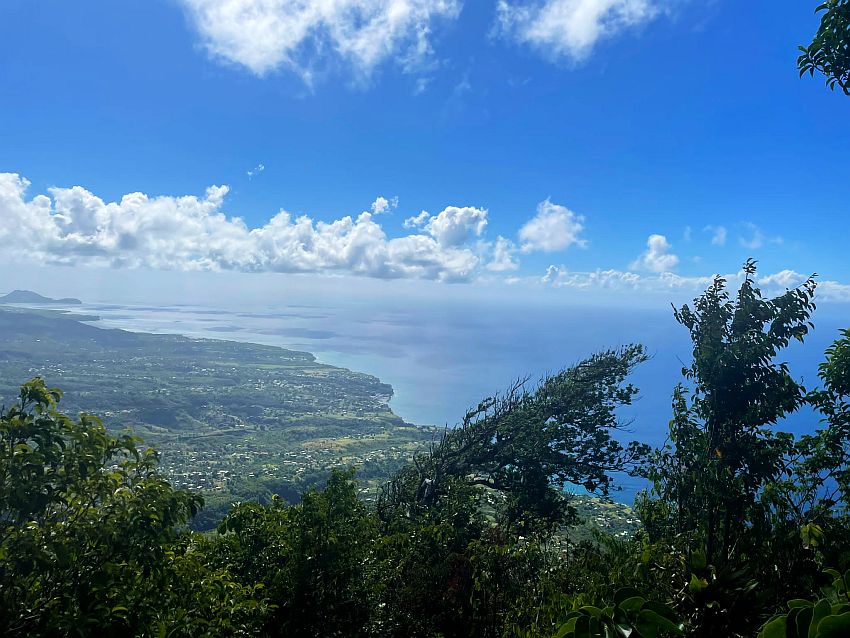
A good level of fitness, good walking shoes, lots of water, and sunscreen are necessary here.
Apparently there is also a trail up Petit Piton. However, part of it is serious climbing, requiring specialist equipment. Only do this hike if you have some climbing experience and only do it with an organized tour or a qualified guide.
The problem with hiking up one of the Pitons, of course, is that from the top you’ll only see the other Piton. Nevertheless, the hike up will provide beautiful views over the island and the ocean, as well as a close-up look at the tropical rainforest flora and fauna on the way.
Make sure to read my Saint Lucia travel tips before you go!
5. Under the water
The Piton Management Area includes a long strip of ocean about 11 kilometers (7 miles) long along the coast, home to a coral reef. You can see it by snorkeling from nearby beaches: Anse Chastanet Beach to the north, where Jade Mountain resort is; Malgretoute Beach, below Stonefield Villa Resort; or at Sugar Beach Resort, between the peaks – and there are probably other beaches I’m not aware of.
It might be better, though, to sign up with a snorkeling tour like this one, or this one (which includes Piton Waterfall and the sulphur spring) or book one from your hotel. Certainly, if you prefer scuba diving, you’ll need to consult a scuba tour provider.
I only snorkeled within the Pitons Management Area once. It was at Anse Chastenet and I wasn’t particularly impressed with the quality of the reef. It seemed quite damaged, except that there were some healthy-looking tube sponges and brain corals. There were lots of different fish, though. Your mileage may vary, especially if you snorkel or dive deeper into the protected area, rather than on the edge of it like I did.
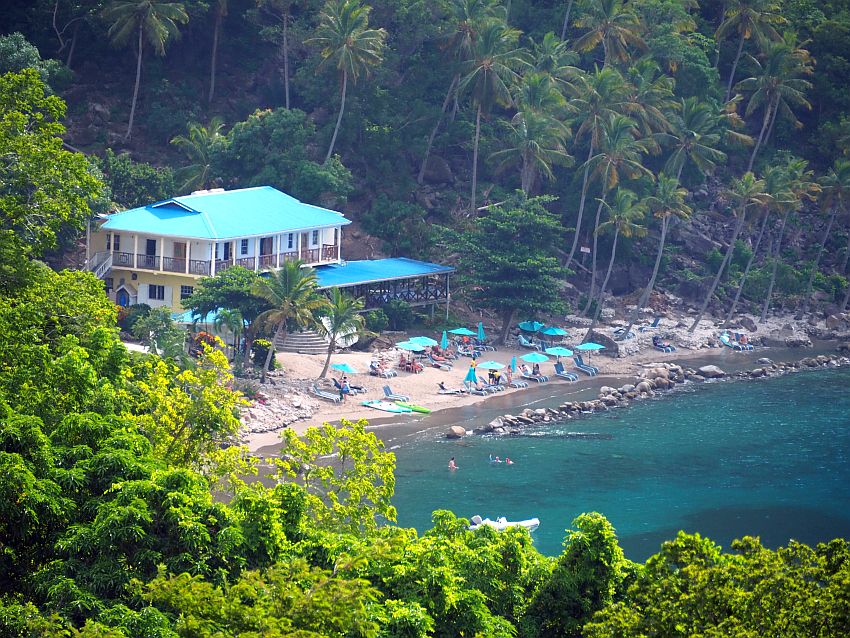
The drive-in volcano
Inside the Pitons Management Area you can also visit a remnant of the collapsed volcano that’s still slightly active. It seems odd, but you can even drive your car right up to it, as we did.
At the entrance to the drive-in volcano, you’ll be assigned a guide as you pay your entrance fee. Driving a bit further and parking, you’ll walk a short trail for a view over the crater.
But you’ll know you’re there before you even arrive because of the strong smell of sulphur. Looking down into the gray and smoking field that is the center of the crater, you can make out several places which are literally boiling. It looks like thick muddy water and the sound of it bubbling is continuous.
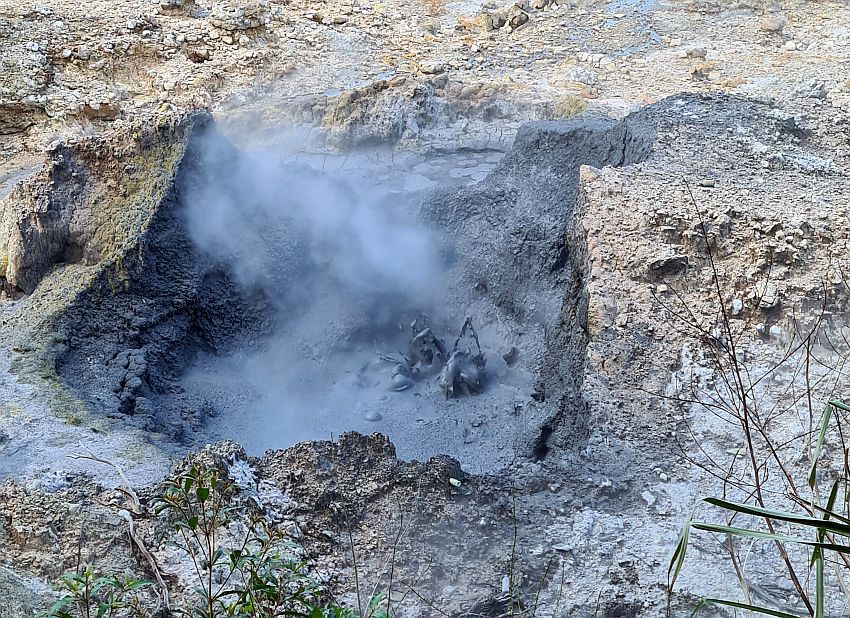
The guide will tell you the geological facts about the volcano, as well as the story of why there’s a fence around the crater that no one is allowed inside except scientists. It has to do with a foolhardy guide and his attempt to entertain his tour group.
Sulphur springs in St Lucia
After this educational stop, the next stop is a fun experience: the most famous of the sulphur springs in St Lucia is nearby. This is a place where warm sulfurous water, heated by the volcano, is channeled through a series of pools. At this point it’s the right temperature to soak in. Once you’re warm and wet, employees will coat you, if you want, with mud carried down here from the volcano’s crater. It’s gritty stuff, so rubbing it on also scrubs your skin.
Once every inch of skin – outside your bathing suit, of course – is covered with whitish mud, they’ll decorate you with lines, handprints and shapes drawn in darker mud. It makes a fun photo, and supposedly it’s good for your skin!
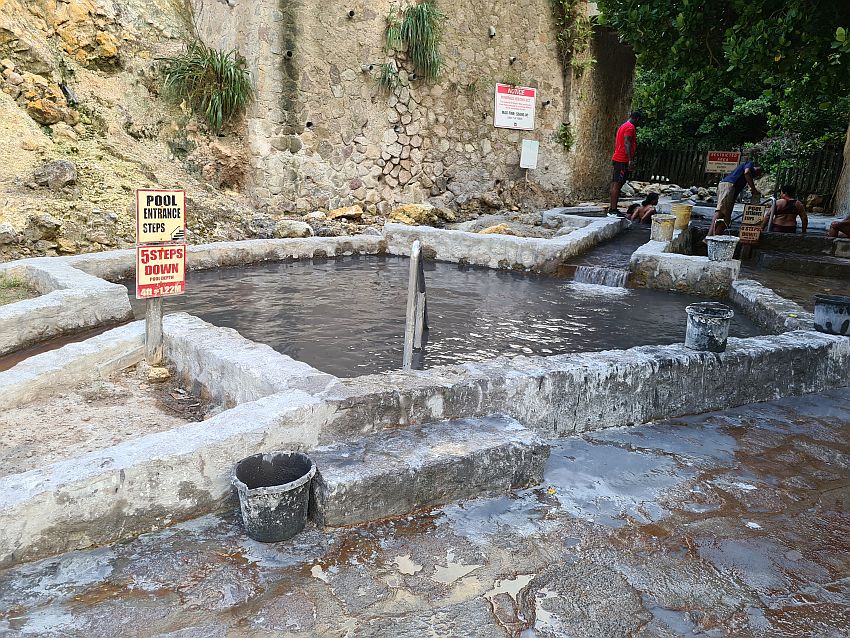
Showers and changing rooms are available.
Other things to see in Pitons Management Area: waterfalls and a botanical garden
There are a number of waterfalls inside Pitons Management Area and within a relatively short drive of Soufrière town. If you stay near Soufrière, they’re fun to visit.
Superman Waterfall
Superman Waterfall (so-called because it made a brief appearance in Superman II) requires a bit of a hike and has to be arranged through a tour. It’s the closest falls to the sulphur springs in Saint Lucia. Here, too, you can cake yourself with mud, then rinse it off in the waterfall.
Toraille Waterfall
Toraille Waterfall, just outside the boundary of the management area, is a popular place because it’s pretty, and also because it’s easy to get to and swim in. Or rather, it’s not really about swimming, but about the experience of standing under the falls.
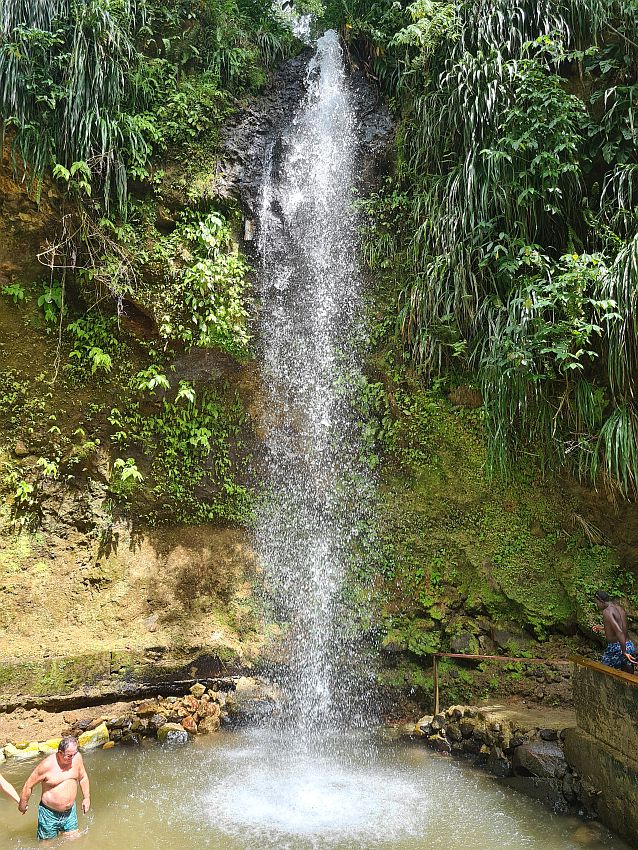
You’ll be charged a small admission fee at Toraille, and there are changing rooms.
Spiderman Falls
We didn’t get to this one, but it’s not far from Toraille Falls. There’s a path after Toraille that leads you on a hike into the forest to Spiderman Falls.
Diamond Falls and Diamond Botanical Gardens
Diamond Falls is inside Diamond Botanical Gardens, on the edge of the Pitons Management Area. It’s unusual because of the colors the mineral-filled water leaves on the rocks.
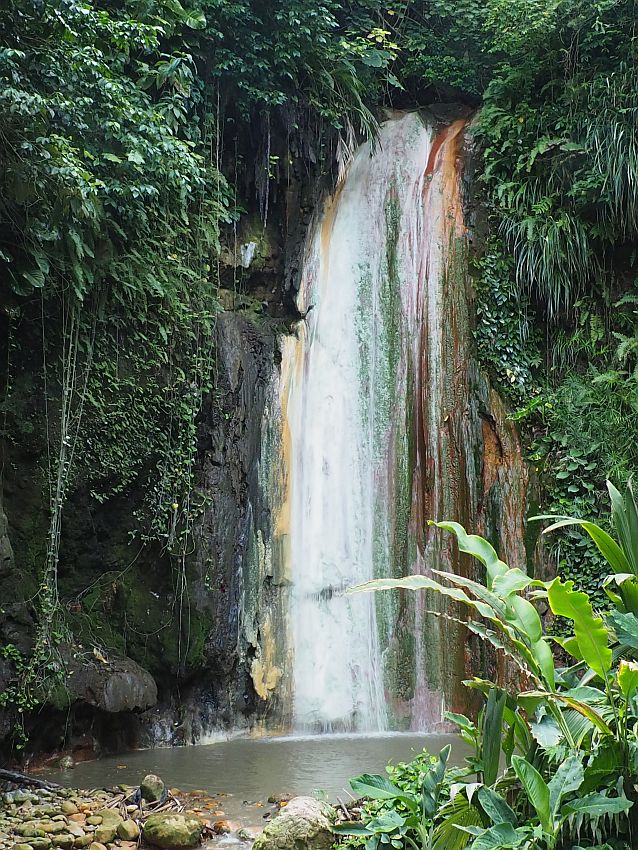
Diamond Falls is very pretty, but you aren’t allowed to swim in it. On the other hand, they do have “therapeutic mineral baths” on the premises that are consistently 45°C (114°F).
Diamond Botanical Gardens are what remains of a very old land grant given by Louis XIV to the Devaux brothers all the way back in 1713. The mineral baths date to 1784, when they were built for the troops of Louis XVI. Supposedly Josephine, the wife of Napoleon Bonaparte, bathed in the baths here at one point. Later owners restored two of the baths in the 20th century, still using a tank from 1784.
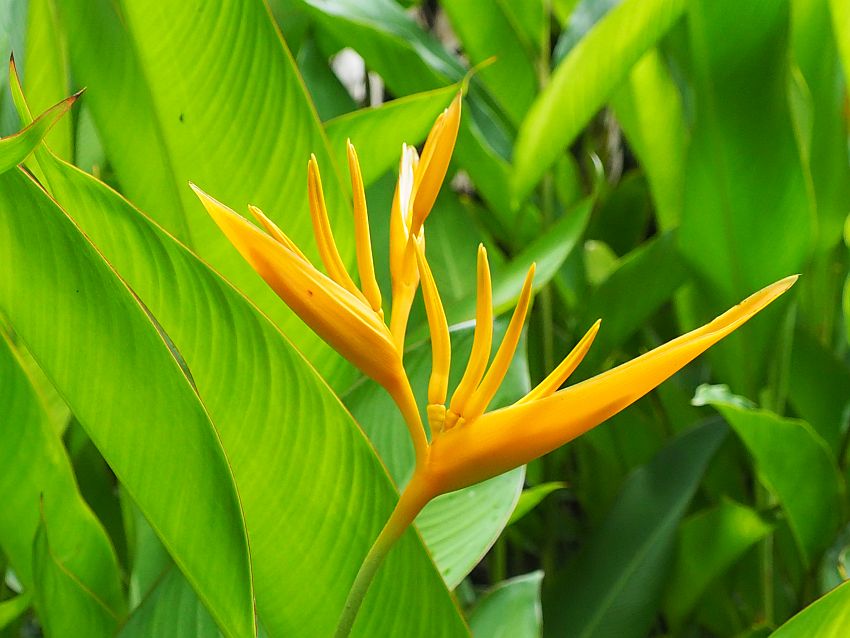
It’s a beautiful place to visit today, with gardens designed and planted back in the 1980s. Set within the natural rainforest, it makes for a fascinating walk. It is home to a huge collection of tropical plants, both native and non-native to Saint Lucia. The range of colors and varieties of flowers was especially wonderful to see.
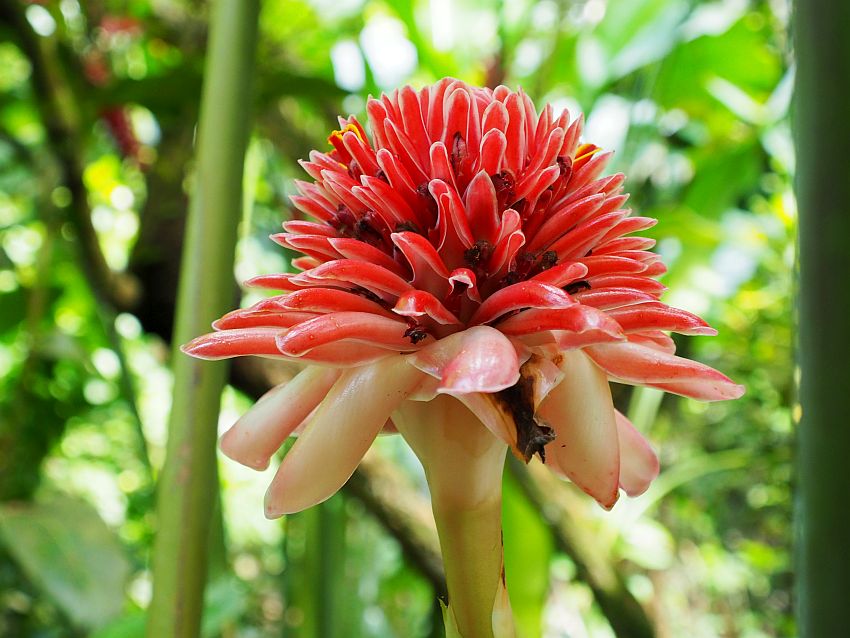
You’ll be charged an admission fee to enter the Botanical Gardens, and an extra fee to enjoy the mineral baths.
Piton Falls
Despite its name, the water in Piton Falls does not come off the Pitons but off the volcano. It’s still quite warm by the time it falls into the concrete pools at the bottom. The waterfall itself isn’t as impressive as the others we saw because it flows down a series of rocks before landing in the pool. On the other hand, there’s a convenient little cave under it that’s perfect for photos.
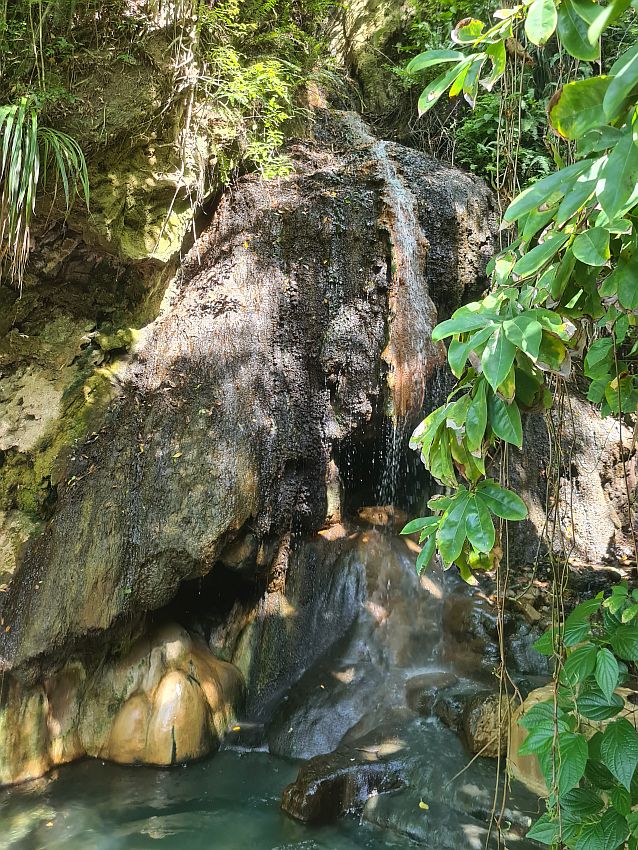
It’s just a few flights of stairs down from the parking lot into the rainforest to get to the pools. Once you’re there, you can lie back in the shallow mineral-rich water and look up at the tropical foliage shading the pool. It’s a pleasant way to while away an hour. There is a small admission fee and some rudimentary changing rooms.
Planning a Caribbean trip? Read this Guadeloupe guide as well as this one about Martinique!
Petroglyphs
In my perpetual search for the history of every place I visit, I wanted to see the petroglyphs that have been discovered on the property of Stonefield Villa Resort. From a small parking area about halfway down the hill from their entrance, we walked a path downhill into the forest. Eventually we came upon the petroglyphs, but we wouldn’t have noticed them if they hadn’t been signposted.
It’s just a few faint carvings on the side of a couple of large rocks, probably left by the Caribs who once lived here. Moss has grown over them, so they’re hard to see. What I could discern were very simple human figures with round heads and oblong bodies, perhaps in robes. Other, fainter, figures seem to be simple faces or stick figures.
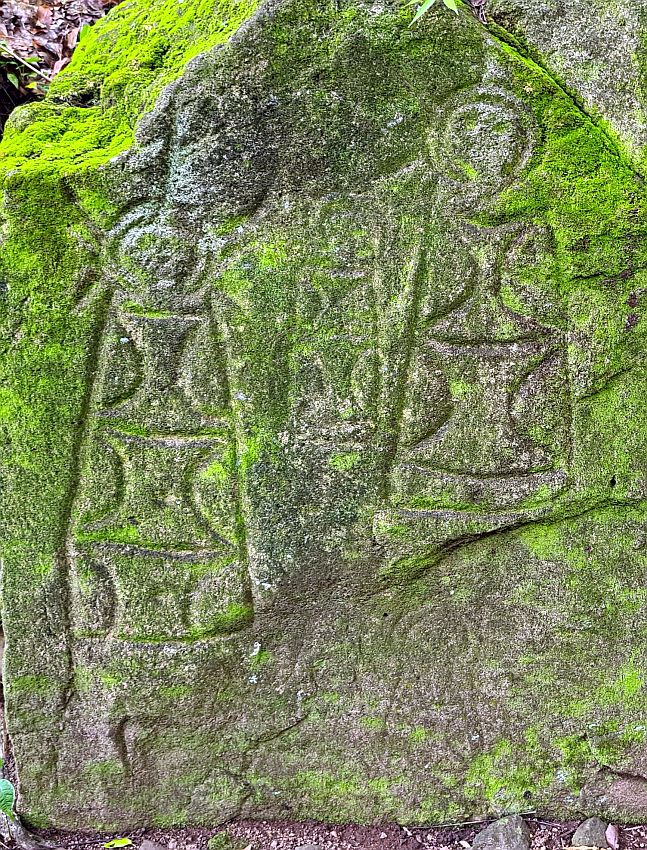
Some comments on driving in Saint Lucia
If you rent a car, don’t believe your GPS’s time estimates. All routes will take longer than listed! They’re very twisty and you have to slow down for curves because the locals often don’t! There are also lots of potholes, forcing you to slow down to pick your way around or through them. Driving takes real focus.
We were using Google maps, and sometimes it sent us onto side roads that might have looked shorter on the map but ended up taking longer. They’d climb up and down very steeply, twisting through neighborhoods or forest, and often became quite narrow, making us slow down even more. Make sure to check your GPS’s directions against an actual map – often the GPS’s route leads back to the main route, but in a more convoluted way. Just stay on the main routes.
If you want to pull over, in many places you’ll have trouble finding a paved place to park. In the tiny car that we rented, there were a few times the shoulder was considerably below the road surface. We risked scraping the underside of the car when we pulled off or back onto the road. Either rent a big car, or get full coverage insurance so you’ll have one less thing to worry about!
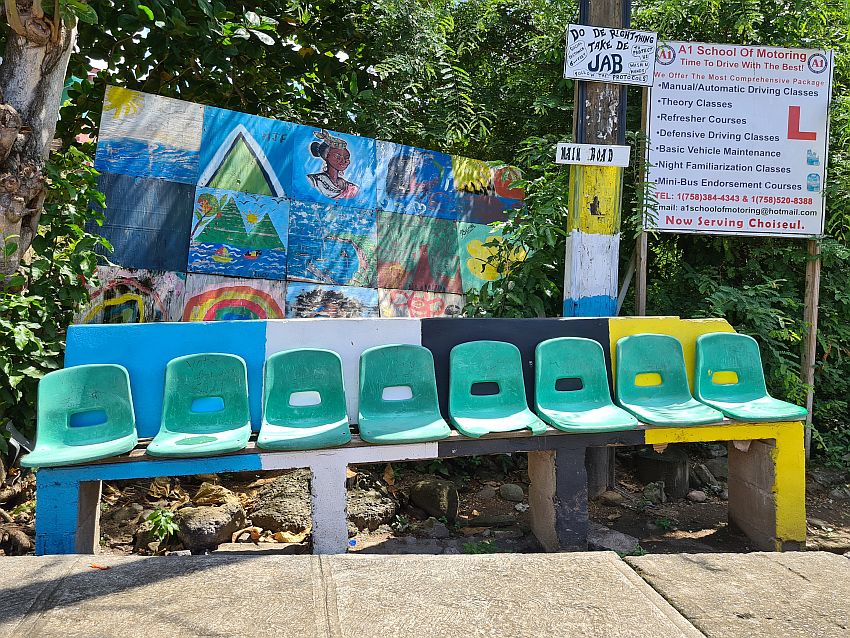
It gets very dark very quickly after sunset and there are few street signs or street lights. Make sure you know where you’re going if you’re going to drive after dark!
We rented a car so we could easily explore the island. There are small vans that serve as buses all over the island, but a car is much more efficient for getting around. Your other option is to sign up for tours. Taking tours would have the advantage of freeing you from the stress of driving.
Some suggested tours
Where to stay near Pitons Management Area
We stayed quite a bit further north, in an apartment called Royal Escapes. While the apartment was great – with three bedrooms, a full-sized kitchen and a small pool, it would be perfect for a family with kids – it was a bit far for sightseeing in the south, taking us about an hour to drive to Soufrière.
There are plenty of places to stay around or inside the Pitons Management Area, from extremely exclusive and expensive all-in resorts to quite reasonable apartments and simple hotels. Click on the map below to see what’s available in Soufrière. Zoom out to see some of the fancier resorts outside of town:
Where to eat near Pitons Management Area UNESCO site
You can eat quite cheaply in Saint Lucia, particularly if you seek out places where the locals eat: local restaurants in Soufrière town or at food stands like Mad Dog Hot Dogs (“Bad to the Bun!”) on the public beach in Soufrière.
Orlando’s
However, I have to mention a particular place that, while much more expensive, is worth the splurge at least once. It’s called Orlando’s, and it’s right in Soufrière on the main road, opposite the graveyard. We went there on the recommendation of a St Lucian, and we were very glad we did.
Orlando Satchell, the chef, uses local ingredients, organic whenever possible, and bases his menu on whatever is available each day. Orlando’s goal, according to his Facebook page, is “to bring Caribbean cuisine to international recognition.”
Trained in the UK, Orlando enjoys mixing flavors in unusual ways. We had a tasting menu out on the balcony of the restaurant one evening. Every one of the courses – I’m not sure how many there were – was surprising in one way or another. The starter, for example, was half a baked guava with a savory salsa. One of the courses was fish fritters, a traditional Saint Lucia dish, but it was served with a fruit salsa of sorts, and the fritters were skewered together with an edible stick made from the heart of a sugar cane. The most traditional course, I’d say, was the lobster bisque with garlic bread, but it was outstanding, so no complaints here!
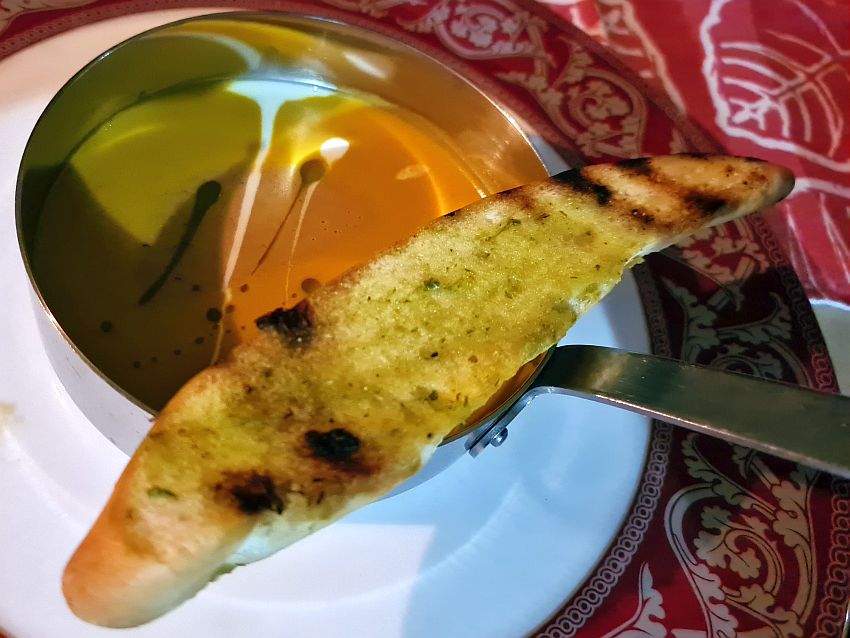
The Mango Tree
Any of the resorts will have good restaurants, and most of them will accept guests who are not staying at the resort. We ended up eating at the Mango Tree Restaurant at Stonefield Villa Resort twice, once for lunch after we visited the petroglyphs on the property, and once a few days later for dinner because we knew it was good and needed a place to meet a friend.
The Mango Tree isn’t as creative or experimental as Orlando’s, but the food – classic Caribbean dishes like fish burgers or jerk chicken – is very tasty. The location is breathtaking: set right on the edge of a hill overlooking the sea and Petit Piton. Make sure to be there for sunset and you won’t be disappointed.
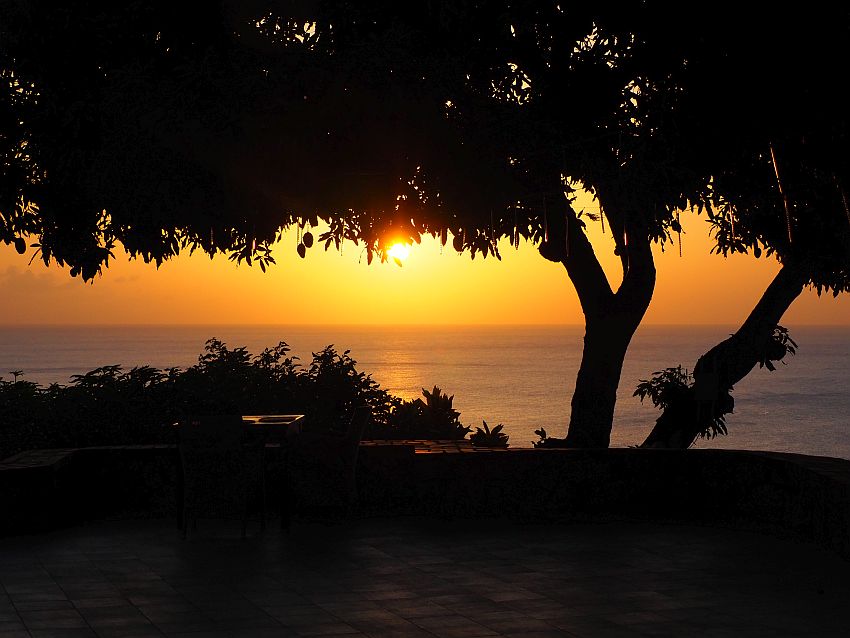
You’d need at least two days at Pitons Management Area UNESCO site in St Lucia just to see the highlights: the Pitons, Tet Paul trail, a waterfall or two, the drive-in volcano and the sulphur springs mud bath. To do all the sights properly and without rushing around, you’d need a full week. Book one of the resorts or an apartment in Soufrière, rent a car, and take your time: you’ll love it!
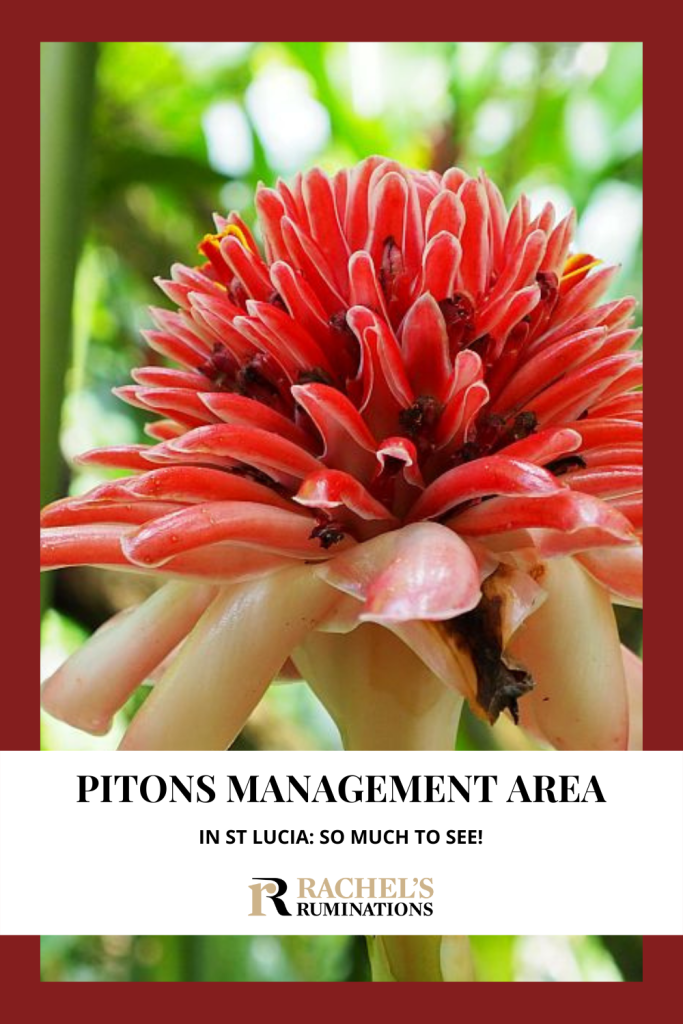
My travel recommendations
Planning travel
- Skyscanner is where I always start my flight searches.
- Booking.com is the company I use most for finding accommodations. If you prefer, Expedia offers more or less the same.
- Discover Cars offers an easy way to compare prices from all of the major car-rental companies in one place.
- Use Viator or GetYourGuide to find walking tours, day tours, airport pickups, city cards, tickets and whatever else you need at your destination.
- Bookmundi is great when you’re looking for a longer tour of a few days to a few weeks, private or with a group, pretty much anywhere in the world. Lots of different tour companies list their tours here, so you can comparison shop.
- GetTransfer is the place to book your airport-to-hotel transfers (and vice-versa). It’s so reassuring to have this all set up and paid for ahead of time, rather than having to make decisions after a long, tiring flight!
- Buy a GoCity Pass when you’re planning to do a lot of sightseeing on a city trip. It can save you a lot on admissions to museums and other attractions in big cities like New York and Amsterdam.
- It’s really awkward to have to rely on WIFI when you travel overseas. I’ve tried several e-sim cards, and GigSky’s e-sim was the one that was easiest to activate and use. You buy it through their app and activate it when you need it. Use the code RACHEL10 to get a 10% discount!
- Another option I just recently tried for the first time is a portable wifi modem by WifiCandy. It supports up to 8 devices and you just carry it along in your pocket or bag! If you’re traveling with a family or group, it might end up cheaper to use than an e-sim. Use the code RACHELSRUMINATIONS for a 10% discount.
- I’m a fan of SCOTTeVEST’s jackets and vests because when I wear one, I don’t have to carry a handbag. I feel like all my stuff is safer when I travel because it’s in inside pockets close to my body.
- I use ExpressVPN on my phone and laptop when I travel. It keeps me safe from hackers when I use public or hotel wifi.


